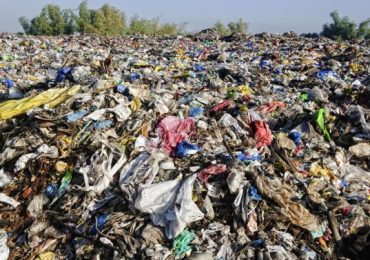You’re someone who is conscious of your use of plastic. You recycle every last scrap of paper, glass and aluminum that you can. But what if there’s something else that you’re disposing of that’s causing major problems for the environment?
Recycling Issues
That something is clothing and materials made from fibers. We’re currently in an age of what’s known as “fast clothing.” Apparel is mass produced so cheaply that clothing becomes obsolete and therefore disposed of in large quantities.
And while some people may be in the habit of donating old clothes to charitable organizations, there will be those clothes and other fiber materials that won’t be donated because of wear and tear. Currently the EPA estimates that 12.7 million tons of clothes are thrown away per year.
Material Concerns
What does this consumption and waste of clothes mean for the environment?
Landfill – clothes create massive landfill waste, and many artificial fibers don’t decompose rapidly or at all.
Wasted water – cotton production and other processes waste millions of tons of water than can be used for better purposes.
Petroleum use – polyester is one of the artificial fibers made with petroleum. Petroleum production has a significant number of highly hazardous repercussions for the environment.
Chemicals and air pollution – textile factories contribute both chemical wastes and air pollutants.
Options For Recycling Textiles
Fortunately, there is a way for people to help reduce the impacts associated with clothing and fiber textiles. Recycling of clothes is possible, and fibers can be reused for many things, including production of moving blankets, cleaning rags and other heavy duty textiles. Here are some tips:
Second hand store donations – this was already mentioned, but it serves as a good reminder for people who don’t think to donate clothing. Many services such as Goodwill and the Salvation Army accept donations of used clothing, which not only reduces wastes but provides affordable or free garments for those in need. Also, by taking some advice from rapper Macklemore, you can save some money yourself and contribute to the reduction of fast clothing production.
Textile recycling centers – many municipal dumps and recycling centers accept clothes and textiles for recycling. Also, don’t forget to recycle your shoes – rubber and other components of shoes can be used for rubber mats and insulation.
Curbside textile pickups – many cities across the U.S. have implemented collection programs, which are convenient for people seeking to get rid of clothes.
Nonprofit agencies – there are several nonprofits which accept used clothing donations. Some, like Planet Aid, will sell textiles to support micro-businesses in developing countries.
If you’re inclined, you can spread the word about recycling clothes through your social media accounts, and you can get in touch with your local elected officials about setting up clothes recycling programs. You can even take it a step further and start drives at your school, church or office.
Have any of you readers ever donated a substantial amount of clothing? Tell me all about it in the comments below.
Alex is a blogger at The Law Office Of Gregory R. Terra, a criminal defense law firm located in Georgetown, Texas. Alex makes it a point to resell or donate his old garments.






